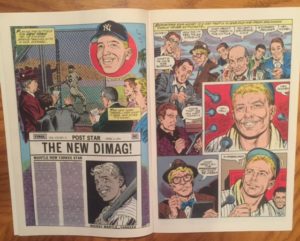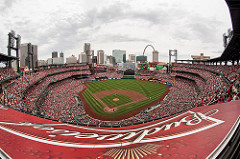
Home of baseball’s most prolific 2016 pinch hitters. Photo by Stefan Ogrisek 
On April 8 of this past season, the Cardinals put major league baseball on notice that 2016 was going to be the Year of the Pinch Hitter in Saint Louis. On that day, the Cardinals came to the plate in the top of the seventh inning trailing the Braves 4-3. Here’s what followed:
- In the seventh, with one out and the bases empty, St. Louis manager Mike Matheny sent Jeremy Hazelbaker up to pinch hit for pitcher Jaime Garcia. Hazelbaker homered to right on a 1-0 count, tying the game.
- In the eighth, with the scored tied (4-4) and Cardinals’ 1B Matt Adams leading off, Matheny went to the bench again – sending Aledmyz Diaz up to pinch hit for Adams. The result? A home run to left on a 1-0 count, giving Saint Louis the lead.
- In the top of the ninth, with one out and no one on, Matheny again called on a pinch hitter. This time it was Greg Garcia hitting for pitcher Kevin Siegrist. Garcia hit a 2-1 pitch to right field for the Cardinals’ record-breaking third pinch hit homer of the game.
Hazelbaker, Diaz and Garcia were the only pinch hitters used by Matheny that day, and they all went deep. It was rookie Hazelbaker’s second MLB home run; rookie Aledmys Diaz’ first MLB round tripper; and Garcia’s first homer of the year and just the third home run in his three MLB seasons. Talk about pushing the right buttons!
The record for pinch hitters used by a team in an MLB games is nine, shared by three teams.
Dodgers (versus Cardinals) on September 22, 1959 – In this contest, won by the Cardinals 11-10, the Dodgers used nine pinch hitters over the final five innings. Those pinch batters went three-for-eight (with a walk), scored two and drove in five. The big blow was a three-run pinch homer by Frank Howard in the top of the nint
Expos (versus Pirates) on September 5, 1975 – Montreal used nine pinch hitters in a 5-2 loss to the Pirates in the second game of a double header. The first pinch hitter was called upon in the fifth inning. Overall, the pinch batters went two-for-eight (both singles) with one walk and one run score
Braves (versus Expos) on September 21, 1993 – In their 18-5 trouncing of the Expos ( in Montreal), the Braves apparently wanted to give everyone a chance to play. They didn’t use their first pinch hitter until the sixth inning – when they were already leading 14-3; and they used six pinch batters in the seventh, when they scored four times to stretch their lead to 18-5. Overall, Braves’ pinch batters went three for six (two doubles) with one hit-by-pitch and two walks. The pinch batters scored four runs and drove in three. Note: Seven of the Braves’ nine pinch hitters stayed in the game. The only defensive position not occupied by pinch hitter at some time during the game were pitcher and catcher.
That April 8, 2016, trio of pinch-hit home runs for the Cardinals were the first three of the Cardinals’ MLB-record 17 pinch-hit home runs during 2016. For the season, ESPN.com stats show the Cardinals led all of MLB not just in pinch-hit home runs, but also in pinch hits (81), pinch-hitting average (.333), PH RBI (51), pinch hitters’ on base percentage (.393) and runs scored by pinch hitters (46). At the other end of the spectrum, no team had fewer pinch hits in 2016 than the Minnesota Twins (9-for-62), while the lowest team PH average belonged to Tampa Bay (.124). The White Sox, Royals, Rangers and Reds also completed the season without a single pinch-hit home run; with the White Sox getting an MLB-low three RBI from pinch hitters.
How dominant were the Cardinals pinch hitters? Saint Louis’ .333 pinch hitting average was 49-points higher than the second-best Mets (.282); and 124-points higher than the 2016 MLB pinch-hitting average. The Mets also finished second to St. Louis in PH home runs (with 13, four behind the Cards) and PH RBI at 51 (ten behind the Redbirds). The NL team pinch-hitting average production was seven homers and 33 RBI; while the AL (with the DH) averaged two homers and 11 RBI. The Cardinals’ 81 pinch hits were 20 more than runner-up Colorado and their 151 PH total bases outdistanced the runners-up (Mets and Rockies) by 49.
Now, let take a look at a few 2016 individual pinch hitting stats.
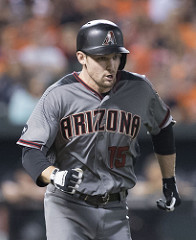
Phil Gosselin – led MLB with 20 pinch hits in 2016.Photo by Keith Allison 
Most pinch hits: Phil Gosselin, Diamondbacks – 20 hits. (77 PH at bats – .263 PH average); Ichiro Suzuki, Marlins, 15 pinch hits (57 PH at bats – .255 PH average).
Pinch-hit home runs: Jeremey Hazelbaker, Cardinals – 4; Matt Joyce, Pirates – 4.
Pinch-hit RBI: Matt Joyce, Pirates – 15; Matt Adams, Cardinals – 13.
Pinch-hit average (minimum 10 PH at bats); Brandon Nimmo, Mets – .500 (six-for-12); Tyler White, Astros – .462 (six-for-13).
Werth Every Penny
Jayson Werth, deserves special recognition for delivering in the pinch in 2016. In four pinch hit appearances, Werth delivered three hits – including one double, two home runs and six RBI.
Here are your single-season all-time pinch hitting record holders.
Pinch hits in a season: John Vander Wal, Rockies, 1995 – 28.
Pinch-hit HR in a season: Dave Hansen, Dodgers, 2000 – 7; Craig Wilson, Pirates, 2001 – 7.
Pinch-hit RBI in a season: Joe Cronin, Red Sox, 1943 – 25; Jerry Lynch, Reds, 1961 – 25; Rusty Staub, Mets, 1983 – 25.
Lenny Harris – 212 Pinch Hits
Lenny Harris may be the king of the pinch hitters. Harris holds the records for: most pinch hit appearances and PH at bats in a single season (95 and 83, Mets, 2001). He also holds the career records for pinch-hit: at bats (804); and hits (212 – no other player has more than 175). In an 18-season, eight-team, MLB career (1988-2005), Harris appeared in 1,903 games, 883 of those (46.4 percent) as a pinch hitter. He was a true utility player playing 50 or more games at every position except CF (three games), pitcher (1 game) and catcher (zero). Harris does not, however, hold the record for career pinch-hit home runs. That belongs to Matt Stairs with 23 (MLB career,1992-2011).
Gene Stechschulte – a Rarity.
In MLB history, 119 players have hit a home run in their first-ever MLB at bat. Of those 119, 29 hit that long ball on the first MLB pitch they ever saw. Out of that 29, six were pinch hitters. Finally, our of that six, Gene Stechschulte of the Cardinals is the only pitcher to hit a home run, as a pinch hitter, on the very first MLB pitch he saw.
It came on April, 17, 2001 – as you might expect – in a blowout. The Cardinals were trailing the Diamondbacks 15-1 in the sixth inning, when Redbirds’ manager Tony La Russa sent Stechschulte to the plate with one on and two out. It was only Stechschulte’s second professional at bat – and the two-run dinger was his second professional extra base hit. Stechschulte had one minor league at bat (in 204 games) and hit a double. In his MLB career, Stechschulte batted just five times – collecting a home run and a single. Stechchulte was no stranger to the batter’s box, however. In 1995, as a pitcher/shortstop at Ashland University, Stechschulte hit .391, with 15 home runs and 58 RBI.
I tweet baseball @DavidBBRT … follow me there for new post alerts.
Member: Society for American Baseball Research (SABR); The Baseball Reliquary; Baseball Bloggers Alliance.
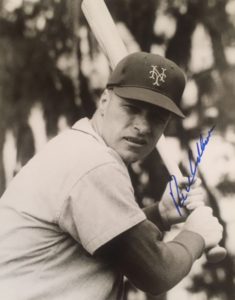
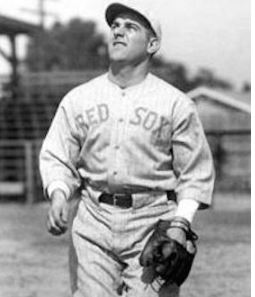
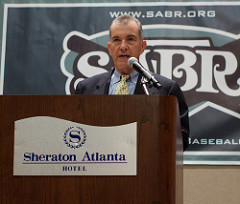
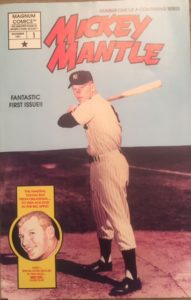 Twenty-five years ago this month (December 1991), Magnum Comics released the first issue of Mickey Mantle Comics – dedicated to exploring the life (in comic book form) of this Yankee icon. The comic book also included a section on the Boston Braves’ “Super-Sub” Sibby Sisti, as well as Mantle and Sisti commemorative post cards. On its inside back cover, Magnum Comics previewed upcoming issues on Brooks Robinson and Duke Snider.
Twenty-five years ago this month (December 1991), Magnum Comics released the first issue of Mickey Mantle Comics – dedicated to exploring the life (in comic book form) of this Yankee icon. The comic book also included a section on the Boston Braves’ “Super-Sub” Sibby Sisti, as well as Mantle and Sisti commemorative post cards. On its inside back cover, Magnum Comics previewed upcoming issues on Brooks Robinson and Duke Snider.